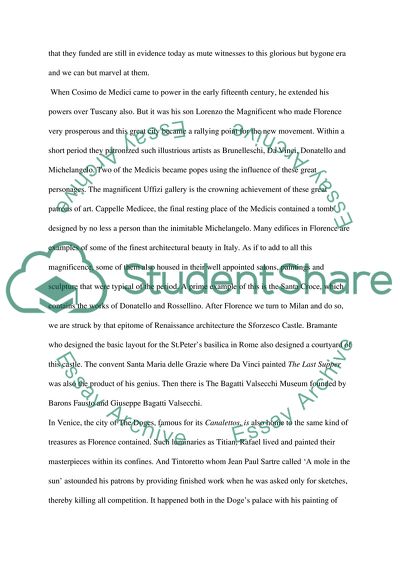Cite this document
(How Do Renaissance Attitudes to Collecting, Cataloguing, and Displayin Assignment, n.d.)
How Do Renaissance Attitudes to Collecting, Cataloguing, and Displayin Assignment. https://studentshare.org/visual-arts-film-studies/1707771-how-do-renaissance-attitudes-to-collecting-cataloguing-and-displaying-works-of-art-differ-from-those-of-the-present-day-are-there-any-lessons-to-be-drawn-from
How Do Renaissance Attitudes to Collecting, Cataloguing, and Displayin Assignment. https://studentshare.org/visual-arts-film-studies/1707771-how-do-renaissance-attitudes-to-collecting-cataloguing-and-displaying-works-of-art-differ-from-those-of-the-present-day-are-there-any-lessons-to-be-drawn-from
(How Do Renaissance Attitudes to Collecting, Cataloguing, and Displayin Assignment)
How Do Renaissance Attitudes to Collecting, Cataloguing, and Displayin Assignment. https://studentshare.org/visual-arts-film-studies/1707771-how-do-renaissance-attitudes-to-collecting-cataloguing-and-displaying-works-of-art-differ-from-those-of-the-present-day-are-there-any-lessons-to-be-drawn-from.
How Do Renaissance Attitudes to Collecting, Cataloguing, and Displayin Assignment. https://studentshare.org/visual-arts-film-studies/1707771-how-do-renaissance-attitudes-to-collecting-cataloguing-and-displaying-works-of-art-differ-from-those-of-the-present-day-are-there-any-lessons-to-be-drawn-from.
“How Do Renaissance Attitudes to Collecting, Cataloguing, and Displayin Assignment”. https://studentshare.org/visual-arts-film-studies/1707771-how-do-renaissance-attitudes-to-collecting-cataloguing-and-displaying-works-of-art-differ-from-those-of-the-present-day-are-there-any-lessons-to-be-drawn-from.


